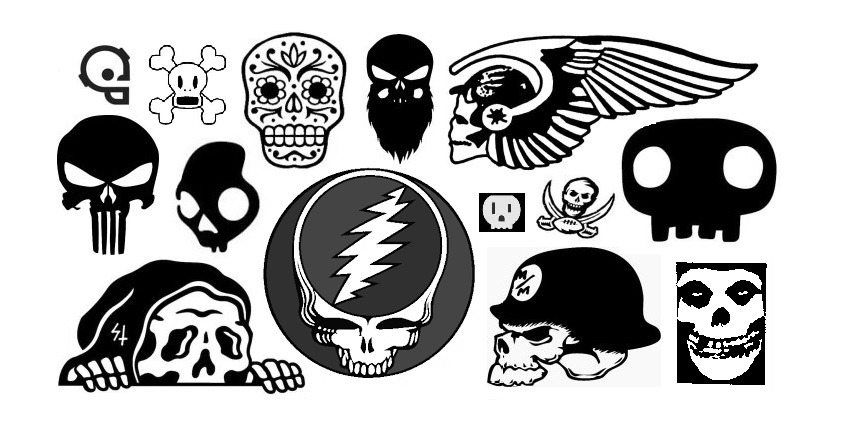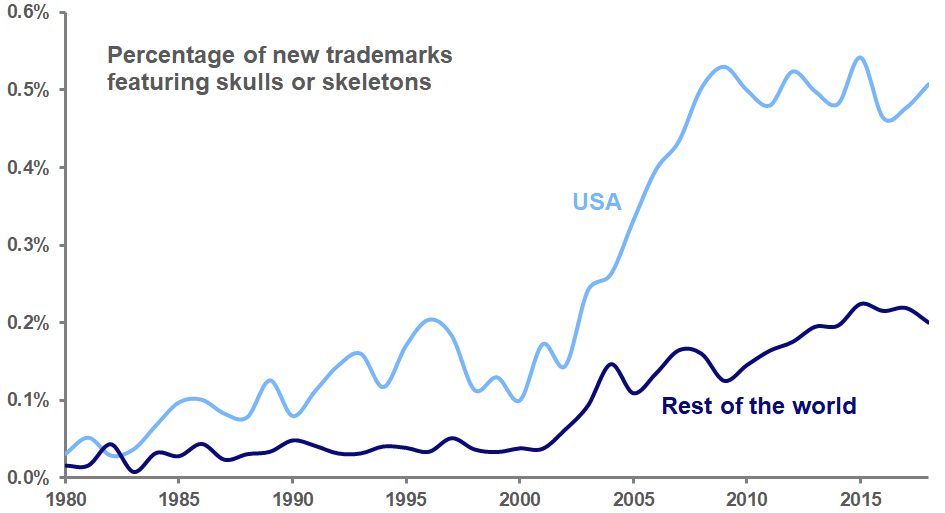
At Halloween, skulls and skeletons make for popular decorations, but in recent years they have been appearing with much greater frequency as design elements in American logos. Skulls, in particular, seem to have assumed a more prominent place in trademarks. Before the turn of the millennium, not many organizations, outside of the occasional rock band or biker gang, were interested in adopting a logo featuring a skull, traditionally the most common memento mori, or reminder of death. The skull’s long-held associations with piracy and poison did not help, either.
But analysis of United States Patent and Trademark Office data shows that between 2000 and 2009, the percentage of new logos with skulls and skeletons more than quintupled, and has remained at this higher level ever since.
What accounts for this increase? The trend toward skull logos has not been as noticeable outside of the United States. Analysis of World Intellectual Property Organization data from more than 100 other countries shows that the use of skulls and skeletons in logos also rose during the first decade of the millennium, but not nearly to the extent seen in the US.
It’s hard to ignore that the increase in American skull logos took place at the same time that the nation assumed a war footing after the terrorist attacks of September 11, 2001. As the number of combat deaths in Iraq and Afghanistan grew, so did the number of skull logos in the US. It does not seem unreasonable to speculate that, just as the use of logos featuring hearts increased after September 11, the specter of death raised by these wars permeated American culture and saw its expression in symbols of commerce. As these wars wound down, the use of skull logos leveled off, but has stayed high.
An examination of today’s American skull logos shows a variety of businesses exhibiting crude expressions of menace, juvenile assertions of badassedness, and more than a little fascist iconography. There are some exceptions to these trends, including the recent popularity of the calavera (the Mexican “sugar skull” used to celebrate Día de los Muertos) as a logo design element. But for the most part, these skull logos are more trick and less treat.

